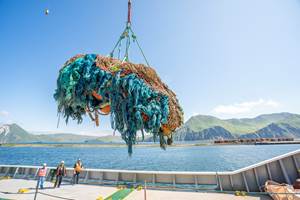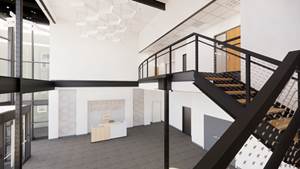From Pattern Maker to Custom Thermoformer: Mayfield Rides the Medical Wave
The story of Mayfield Plastics will ring familiar to anyone who’s been around plastics processing for a few years.
The story of Mayfield Plastics will ring familiar to anyone who’s been around plastics processing for a few years. The company started in 1972, making patterns for castings used in the machine tool industry. Then it got into building thermoforming tools when it was known as S. Ralph Cross & Sons, Inc., before evolving into custom heavy-gauge thermoforming when plastics started to replace metal in medical and other equipment.
What’s particularly intriguing about Mayfield (mayfieldplastics.com) is that it continues to evolve. Just five years ago, it relocated from a 25,000 ft² facility it had outgrown in Worcester, Mass., to a 60,000 ft² plant in Sutton, Mass., which has another 30,000 ft² available for expansion later on. “The move to the new facility has allowed to us buy more equipment, bigger equipment, and more sophisticated equipment,” remarks Ronald G. Cross, company president and son of its 81-year-old founder, Gordon Cross, who is still involved in the business. “Our customers are getting more demanding every day in terms of what they expect from us. Part requirements are becoming more complex, and we’re trying to do things that we’ve never done before.”
It’s most recent equipment purchase is a Model 54S single-station thermoformer from MAAC Machinery (maacmahinery.com), which Cross says “is indicative of our commitment to provide our customers with the latest technology.” The machine has a 48 x 60 in. forming area and a PLC controller providing 10 automatic forming techniques to ensure process repeatability. It has unlimited storage of job files and is equipped with top and bottom quartz ovens providing “instant on” during the heating cycle and “instant off” during the forming cycle for greater energy efficiency.
“Equipment versatility is important for us,” Cross remarks. “We could use a machine to run two different jobs a day or a single job for two weeks.” Mayfield’s complete equipment inventory consists of two 3-station rotaries, one of which can accommodate twin-sheet forming, and five single-station forming machines. It also operates two 5-axis CMS routers; three 3-axis vertical machining centers; and eight 3-axis milling machines, all of which are used for trimming. Cross says Mayfield does not landfill any of its production scrap; instead it sells the scrap back to its sheet vendor to be reprocessed.
MEDICAL SPECIALISTS
Mayfield has served the medical market for the past 25 years, and today some 70% of its business is in that field, notably housings and skins for diagnostic machines like CAT Scanners. Its medical product line also includes sidewalls, user interface panels, bezels and enclosures, internal components, work-in-progress trays, and hospital room panels.
The majority of these products are formed from twin-sheet ABS, but Mayfield is also adept at thermoforming PC, all types of PE, general-purpose PS, and PETG. Owing primarily to the fact that a lot of its runs tend to be short and highly customized—as few as 50 parts in some cases—Mayfield does not extrude its own sheet, instead buying it from such as Spartech Corp. (spartech.com), Kydex LLC (kydex.com), Primex Plastics Corp. (primexplastics.com), and several others. Most of its sheet purchases are monolayer structures. “A lot of our orders fall between 50 and 2000 pieces,” Cross elaborates. “Anything approaching 5000 pieces is what we would consider really high volume.” Depending on the type of resin used, Mayfield will run the sheet through drying ovens at 155 F to remove any moisture it may have absorbed during shipping or while in inventory.
While Mayfield has “weathered the storm” of the economic recession, Cross says his business was not altogether insulated from the downturn, noting that medical OEMs began reducing both order quantity and frequency starting in November 2008. Today, Mayfield’s annual business is in the $10 million range, and it employs 30 people in Sutton. Cross notes that business slipped somewhat in 2009, but looks to be bouncing back now.
Mayfield’s physical location played a role in its decision to seek out medical business. “This area has typically been where innovative companies have located,” says Cross. “Our move into medical began in the mid-’80s with a project we did for Hewlett-Packard, which was in nearby Andover, Mass. “We’ve worked with startup companies in Cambridge and along the Route 128 corridor.” The area along the western part of that Boston beltway has been dubbed “America’s Technology Highway,” owing to the number of high-tech firms that have set up shop there. Cross reports that for the last three months Mayfield has been working with an unnamed supplier of medical equipment on a project that would involve 16 different parts for a single diagnostic device.
Mayfield’s processing activities extend well beyond medical parts. By volume, its most significant product is radomes. A radome is a structural, weatherproof enclosure that protects a microwave or radar antenna in recreational vehicles, yachts, and military and commercial aircraft. The radomes are pressure formed from UV-stabilized ABS sheet on a rotary press at cycles of roughly 3 min, depending on the size. A typical radome order for Mayfield is 500 pieces. Most are fabricated and shipped on a just-in-time-basis. Mayfield also fabricates up to 40 different automotive interior parts, such as side panels and doors, for medical vans or ambulettes.
WIDE-RANGING CAPABILITIES
Given its origins, it’s not surprising that Mayfield makes tooling, jigs, and fixtures for the majority of its jobs. Tooling considered “active” stays on the shelf for three years. Older tools are returned to the customer. Mayfield inventories hundreds of active tools in sizes up to 4 x 7 ft. It also inventories hundreds of different sizes of pressure boxes. Mayfield also fabricates prototype tooling of aluminum or wood composite for trials. ‘This gets us in on the ground floor of many projects,” says Cross. “A customer will come to us with an idea—or maybe we’ll go to them with one—about a part or a series of parts, and we have the capabilities to trial it out.”
When a new project comes on stream, its point of entry is typically in Mayfield’s CAD/CAM room. The company’s website is set up to accept complete CAD drawings with all of the parts’ critical dimensions. From there, the mold and fixtures are cut according to file specifications, and the part is ready to be formed. Mayfield uses Cimatron (cimatron.com), SolidWorks (solidworks.com), and MasterCam (mastercam.com) software for file transfer and toolmaking.
For future growth opportunities, Cross believes Mayfield has several options. Future expansions could include clean-room thermoforming to provide parts for equipment used in operating rooms. Thinner-gauge forming is another possibility.
Related Content
Thermoformer Maximizes Productivity with 3D Printing
Productive Plastics has created an extensive collection of 3D printed manufacturing aids that sharply reduce lead times.
Read MoreAutomation in Thermoforming on the Rise
Equipment suppliers’ latest innovations exemplify this trend driven by factors such as labor shortages, higher-speed thermoformers and tighter quality control.
Read MoreManufacturer Helps Clean Up Global Waterways with Reclaimed Plastics
RSP and Oceanworks partnership diverts plastic wastes from waterways for incorporation into new products.
Read MoreBrueckner Group USA Moving to Bigger Space
New facility in New Hampshire will serve the local customer base better and enhance capabilities in the North American market.
Read MoreRead Next
People 4.0 – How to Get Buy-In from Your Staff for Industry 4.0 Systems
Implementing a production monitoring system as the foundation of a ‘smart factory’ is about integrating people with new technology as much as it is about integrating machines and computers. Here are tips from a company that has gone through the process.
Read MoreLead the Conversation, Change the Conversation
Coverage of single-use plastics can be both misleading and demoralizing. Here are 10 tips for changing the perception of the plastics industry at your company and in your community.
Read MoreAdvanced Recycling: Beyond Pyrolysis
Consumer-product brand owners increasingly see advanced chemical recycling as a necessary complement to mechanical recycling if they are to meet ambitious goals for a circular economy in the next decade. Dozens of technology providers are developing new technologies to overcome the limitations of existing pyrolysis methods and to commercialize various alternative approaches to chemical recycling of plastics.
Read More





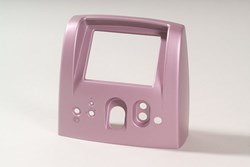
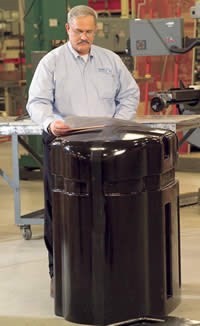
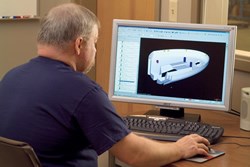



.png;maxWidth=300;quality=90)

















